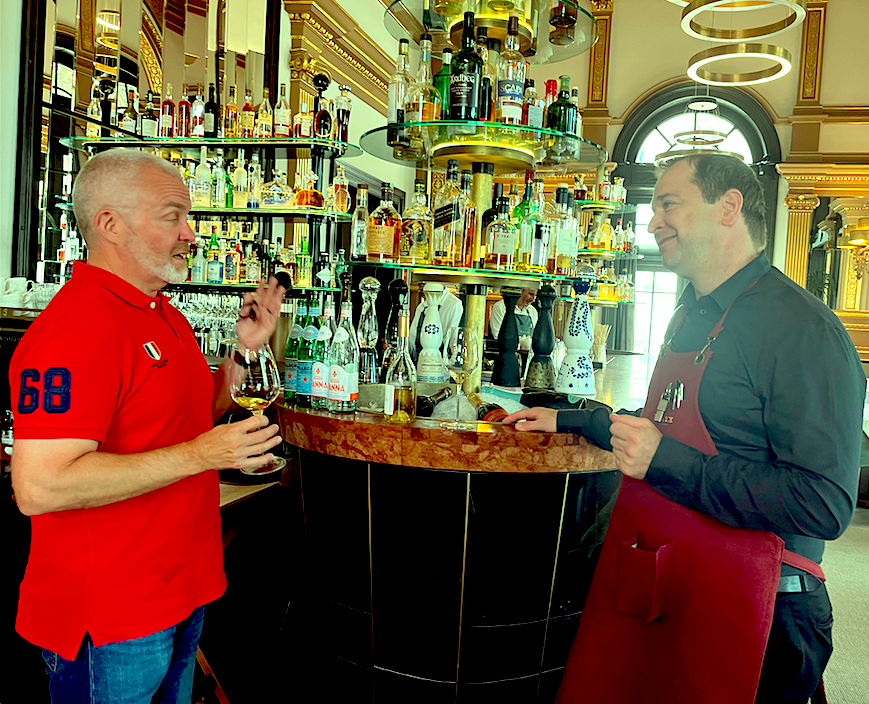
“Királyleányka, Kadarka, some new faves of mine”
Jonas Röjerman MW after his Hungarian wine trip
– You have just spent 4 days in Hungary visiting 3 wine regions and tasting wines from around 20 wineries. What is your overall impression, especially compared to your previous experiences of Hungarian wines?
– These were a couple of new regions to me (Balatonfüred, Szekszárd and South Balaton). Based on my previous experiences the average quality level has been lifted so the base now is clear – fruity and clean. However, that goes quite universal around the world nowadays.
– Were there any particular grape varieties that impressed you?
– Yes, Hungary has a set of their own unique varieties like Furmint that´s been a long-time favourite of mine. There are also the less well-known varieties outside Hungary like Királyleányka is a particular new fave of mine. What’s not to love about the story and name (‘little princess’) besides the quite unique character and distinct acidity that gives the style a freshness. And even if I have not tasted extensively since there if limited production Juhfark is a very good quality grape variety.


Indigenous AND Cabernet Franc
– In Szekszárd there is a constant debate to focus on local varieties and styles only (Kékfrankos, Kadarka, Bikavér), however, there are some beautiful wines made of international varieties. Do you think they should choose either direction?
– Well, I have a very clear view on this…I don’t think the world of wine needs another Syrah, Pinot noir or Cabernet Sauvignon wine unless you plan to compete in the low entry market for bulk and need the variety generic-bland commodity expression to mass produce. The future is with Hungary’s own indigenous varieties. The only exception will be the Cabernet Franc that seems to work very well in the regions and has a longer history. The one that did get my attention during the week was especially Kadarka when it´s produced in the more contemporary light and transparent style of red berries and a less extracted style. Also Kadarka handled in the same less extracted and more lighter oaked versions.
– Are there any wines that you tasted at Gettogether that you think would be relevant for the Swedish customers? In other words, did you see any potential – good quality at a price suitable for the Swedish distributing chain?
– I found a handful of interesting wines and as mentioned above the ones based on the classic Hungarian varieties and one or two blends that showed potential.


How to enter Sweden?
– In Sweden, wine wholesale and retail are in the hand of the monopoly called Systembolaget, however, they work with importers. How many importers are there in Sweden?
– There is a mass of registered importer in Sweden. Systembolaget has more than 900 suppliers registered. Good to know is that most of them are small more hobbies like importers. Of Systembolaget’s annual turnover (volume) more than 98% come from only 110 importers, the rest are very small.
– So what do you suggest to Hungarian winemakers, how should they start if they want to enter the Swedish market?
– First and foremost you need an importer since Systembolaget only deals with companies in Sweden and is not allowed to buy directly from producers. How do you find them? Well, there is an organisation for a substantial part of them called SVL and then there is always my company Vitis Wines to contact.
More about Jonas Röjerman MW
Vitis Wines, Röjerman’s import company
Jonas Röjerman MW was a jury member of the 6th WineWineWriting contest organized by Hungarianwines.eu. His trip to Hungary was sponsored by HNT (National Council of the Wine Communities Hungary).
Editor’s suggestion to read
One might think that in our recent world of competition the monopol system is not sustainable and customers are against it, but quite a surprising number of Swedesh customers accept the system as it is.







